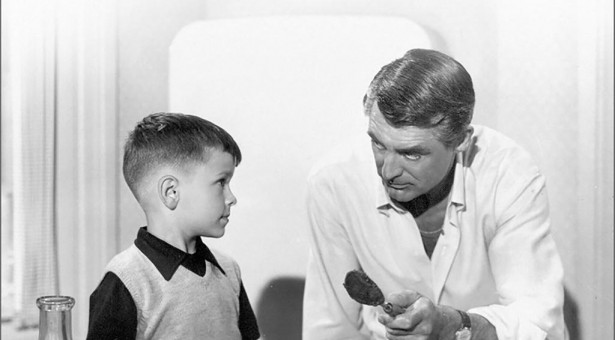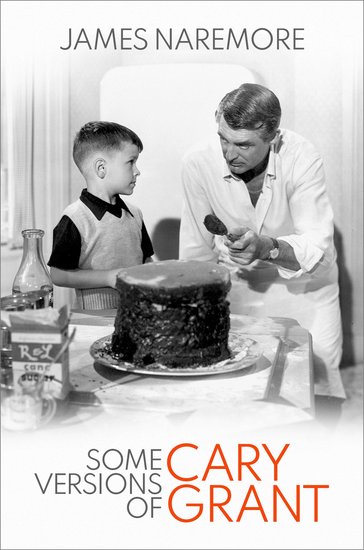Five Faces of Cary Grant

REVIEW – BOOK: Some Versions of Cary Grant (James Naremore, Oxford University Press, 2022) – MILAN HAIN –
Indiana University Professor Emeritus James Naremore is a scholar with many diverse interests, as I reported in the pages of 25fps years ago. In addition to film noir, adaptation and authorship (Welles, Kubrick, Minnelli), foremost among them is film acting, to which Naremore devoted his influential and oft-cited book Acting in the Cinema (1988, University of California Press) and to which he returns repeatedly in shorter texts.
Most recently it was in a slim monograph from Oxford University Press focusing on the acting skills of Cary Grant. The book, Some Versions of Cary Grant, has two aims: to introduce Grant’s acting range and to test Naremore’s concept of film acting on more extensive material. Although Acting in the Cinema had already included a chapter on Grant in North by Northwest (1959), here the author set himself the more ambitious goal of covering a more substantial part of the actor’s filmography.
What I find most interesting is Naremore’s starting point, where he divides Grant’s roles into five categories based on material and acting style. These five versions are (1) farceur Cary, (2) dark Cary, (3) romantic Cary, (4) domestic Cary, and (5) cockney Cary. Thus, Naremore reveals from the outset the actor’s performative versatility and the multiple meanings of his star image. As he himself states, „the star’s image is always an oversimplification. Moreover, it can obscure the talent needed for its creation. In Grant’s case the image was so powerful that he was sometimes treated with condescension, as if he were simply a charming fellow who always played the same thing.“ The main virtue of the book is that it actually manages to dispel this limited view: Grant emerges as a master of his craft, even though he did not receive any major awards during his career (he has only been nominated for an Oscar twice).
On the other hand, I found the way the chapters were executed disappointing. Each version of Cary is demonstrated by two or three films, because according to Naremore it would be „counterproductive“ to analyse them all. Thus, the chapter on the dark Cary consists of analyses of Suspicion (1941) and Notorious (1946), while the Cockney Cary (perhaps his most surprising version) is illustrated using Sylvia Scarlett (1935) and the drama Nothing But the Lonely Heart (1944). But the individual analyses are unfortunately drowned in too much descriptiveness. Of course, a certain amount of description is to be expected when analysing acting, but in this case I think a tolerable level has been exceeded, since most of the text consists of retelling the plot and analytical insights are in a distinct minority.
It is only because of Naremore’s mastery of language that wading through the chapters does not become a tedious activity. The approach taken is purely textual, with no attention paid to, for example, promotion, publicity or reception. The absence of any conclusion is also striking. All this limits the potential impact of the book. Thus, the most interesting chapter is the introduction, where the author lays out his approach and conceptual grasp of Grant’s acting portfolio. In fact, I could have done without the rest.
Some Versions of Cary Grant
James Naremore
Oxford University Press, 2022
224 pages
the book can be ordered here







